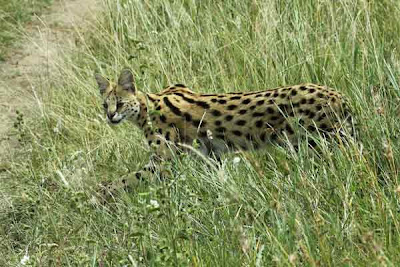If I were write about it in detail I would probably have to repeat much of what I wrote last year so this time I will keep it brief and just share a few photographs.
 African Spoonbills - there were hundreds at Lake Manyara. Maybe one day we'll find one in the Algarve!
African Spoonbills - there were hundreds at Lake Manyara. Maybe one day we'll find one in the Algarve! Mwanza Flat-headed Agama - the field guide says they are 'quite wary...and often reluctant to allow humans to approach closely'. This one was very much an exception - an impressive beast! They are reported to have become popular as pets because of their resemblance to Spider-Man.
Mwanza Flat-headed Agama - the field guide says they are 'quite wary...and often reluctant to allow humans to approach closely'. This one was very much an exception - an impressive beast! They are reported to have become popular as pets because of their resemblance to Spider-Man. Auditioning for a place in Trafalgar Square? Rocky outcrops like this one are popular resting places for Lions.
Auditioning for a place in Trafalgar Square? Rocky outcrops like this one are popular resting places for Lions. Rufous-naped Lark - particularly common in the Serengeti, singing from bushes and termite mounds, but what a monotonous song.
Rufous-naped Lark - particularly common in the Serengeti, singing from bushes and termite mounds, but what a monotonous song. Little Bee-eater - widespread and usually seen in pairs. In the Ngorongoro highlands we also saw the similar but much larger Cinnamon-chested Bee-eater.
Little Bee-eater - widespread and usually seen in pairs. In the Ngorongoro highlands we also saw the similar but much larger Cinnamon-chested Bee-eater. Bateleur - another easy to identify raptor. The name "Bateleur" is French for "tight-rope walker", referring to the bird’s characteristic habit of tipping the ends of its wings when flying, as if to keep its balance.
Bateleur - another easy to identify raptor. The name "Bateleur" is French for "tight-rope walker", referring to the bird’s characteristic habit of tipping the ends of its wings when flying, as if to keep its balance. Serval Cat - our attention was drawn to this one in the Serengeti by several very alarmed and noisy Helmeted Guineafowl. Servals hunt in the long grass and can be difficult to see, so we were pleased the next day when we came across another one in Ngorongoro Crater.
Serval Cat - our attention was drawn to this one in the Serengeti by several very alarmed and noisy Helmeted Guineafowl. Servals hunt in the long grass and can be difficult to see, so we were pleased the next day when we came across another one in Ngorongoro Crater.
One of the very approachable Yellow-billed Kites that frequent the Ngoitokitok picnic site in Ngorongoro Crater.

There was more water in the Crater this year than I've seen before and as a result more wetland birds. Ducks included Cape Teal, Hottentot Teal and these Red-billed Teal.
 We watched for several minutes as this Black-headed Heron wrestled with a snake and was finally able to swallow it.
We watched for several minutes as this Black-headed Heron wrestled with a snake and was finally able to swallow it.




































